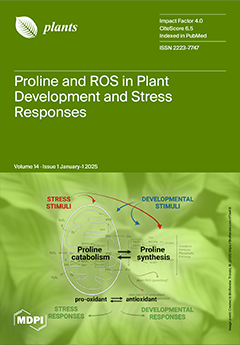Light serves as the unique driving force of photosynthesis in plants, yet its intensity varies over time and space, leading to corresponding changes in the photosynthetic rate. Here, the photosynthetic induction response under constant and fluctuating light was examined in naturally occurring saplings of four sun-demanding woody species,
Eucalyptus.
Ficus macrocarpa L.,
Hibiscus syriacus L. and
Ficus carica L. We aimed to find out the relations among gas exchange parameter adaptions among different species during photosynthetic induction. The net photosynthetic rates (
A) versus time course curves were sigmoidal or hyperbolic after the dark-adapted leaves were irradiated by continuous saturated light. Compared with other species,
Ficus carica L. have the largest net photosynthesis rate, stomatal conductance to CO
2 (
gsc), and the maximum carboxylation rate (
Vcmax) at both the initial and steady photosynthetic state. The initial
gsc (
gsci) was as much as sixfold higher compared to the other shrub,
Hibiscus syriacus L. The time required to reach 90% of
A (t
A90) was 7–30 min; t
A90 of
Ficus carica L. and
Ficus macrocarpa L. were lower than that of the other two species. The time required to reach 90% of
gsc (t
gsc90) significantly lagged behind t
A90 among species. Biochemical induction was fast in leaves of
Ficus carica L., as about 4 min were needed to reach 90% of
Vcmax, while the other species needed 7–18 min. Correlation analysis showed that the t
gsc90 was the main factor in limiting t
A90, especially for
Eucalyptus spp. and
Hibiscus syriacus L.;
gsci was negatively correlated with t
gsc90 among species. Moreover, time-integrated limitation analysis revealed that
gsc still accounted for the largest limitation in constraining
A of
Eucalyptus spp. and
Hibiscus syriacus L. and
Ficus macrocarpa L. Overall, the findings suggest that to enhance the carbon gain by woody species under naturally dynamic light environments, attention should be focused on improving the rate of stomatal opening or initial stomatal conductance.
Full article






